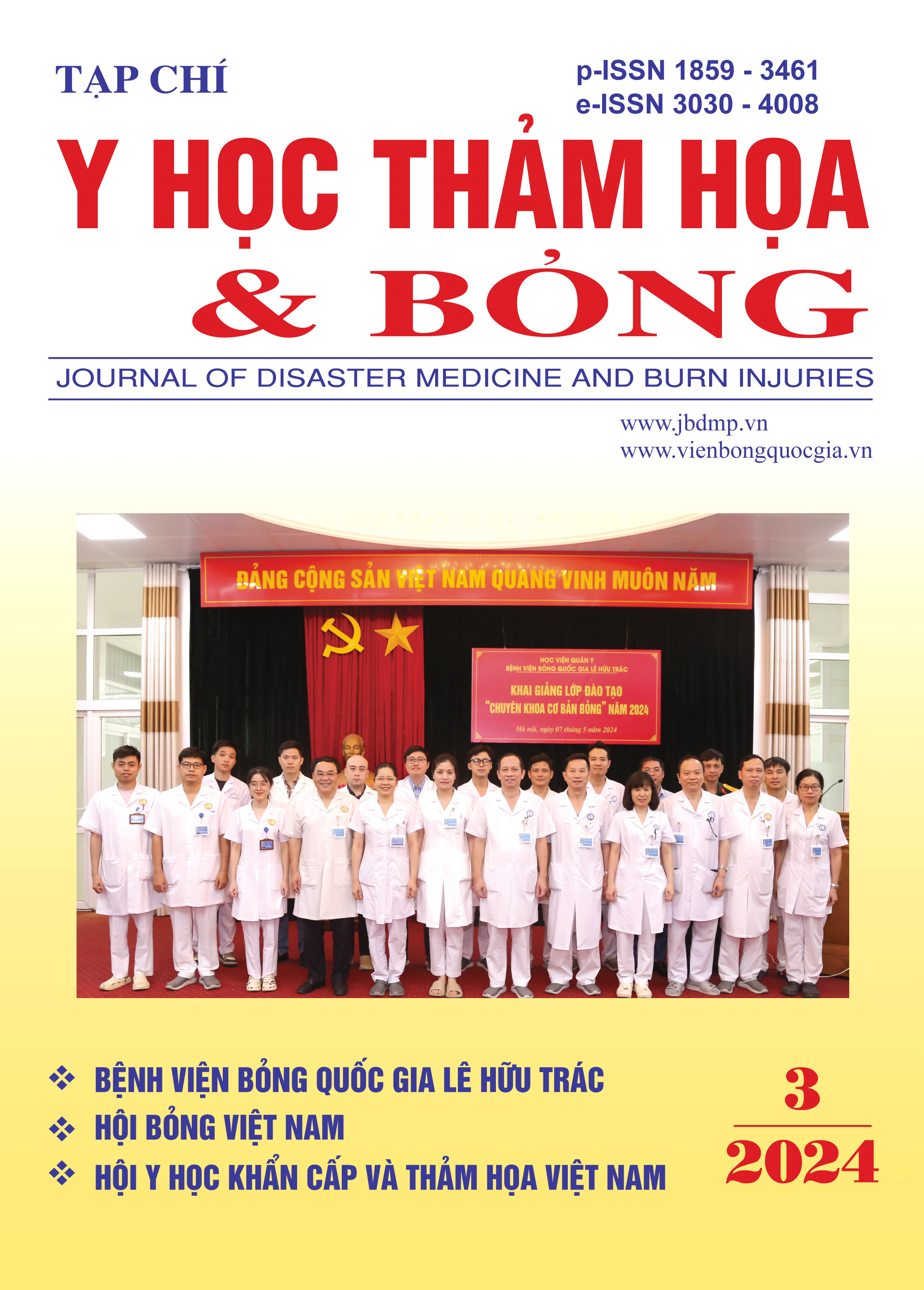The use of the NIPE index for pain evaluation during pediatric burn surgery
Main Article Content
Abstract
Surgical excision of burn necrosis and autologous skin grafting usually cause much pain for pediatric burn patients, so monitoring the level of pain during pediatric burn surgery is vital. Clinically, evaluating the level of pain in anesthetized patients is often based on changes in heart rate, blood pressure, body movement, or sweating. Nevertheless, these indicators have low sensitivity and specificity. Recently, the Neonate Infant Parasympathetic Evaluation (NIPE) index has helped to evaluate pain levels objectively. Hence, in this study, we report 8 cases of using the NIPE index during burn necrotomy and skin grafting in pediatric patients for the purpose of monitoring and evaluating the level of intraoperative pain.
A prospective, descriptive study was conducted on a series of 8 pediatric burn patients whose ages ranged from 7 months to 23 months old, with indications for anesthesia, burn necrotomy, and/or skin grafting, at the Department of Anesthesia, Le Huu Trac National Burn Hospital, from November 6, 2019, to July 23, 2020, who were monitored for NIPE index during the surgery.
The results showed that the NIPE index value at all study times was greater than 50, meaning that the pediatric burn patients were painless during surgery.
NIPE is an index that can be used to evaluate the level of pain during pediatric burn surgery.
Article Details
Keywords
NIPE, pediatric burn necrotomy, skin grafting
References
2. Weber, Frank, et al. "The heart rate variability‐derived Newborn Infant Parasympathetic Evaluation (NIPE™) Index in pediatric surgical patients from 0 to 2 years under sevoflurane anesthesia - A prospective observational pilot study." Pediatric Anesthesia 29.4 (2019): 377-384.
3. Zhang, Kan, et al. "Newborn infant parasympathetic evaluation (NIPE) as a predictor of hemodynamic response in children younger than 2 years under general anesthesia: an observational pilot study." BMC anesthesiology 19.1 (2019): 1-7.
4. Neumann, Claudia, et al. "Comparison of the Newborn Infant Parasympathetic Evaluation (NIPE™) index to changes in heart rate to detect intraoperative nociceptive stimuli in healthy and critically ill children below 2 years: An observational study." Pediatric Anesthesia 32.7 (2022): 815-824.
5. Nguyễn Thị Hương (2018) “Đánh giá hiệu quả giảm đau của ketamin liều thấp trong thay băng bệnh nhân bỏng trẻ em”. Luận văn thạc sĩ y học, Học viện Quân y.
6. Butruille, Laura, et al. "Development of a pain monitoring device focused on newborn infant applications: The NeoDoloris project." IRBM 36.2 (2015): 80-85.
7. Okur, Nilufer, et al. "Neonatal pain and heart rate variability in preterm infants treated with surfactant: a pilot study." Archivos Argentinos de Pediatria 117.6 (2019): 397-397.
8. Recher, Morgan, et al. "Assessment of procedural distress in sedated/intubated children under 3 years old using the newborn infant parasympathetic evaluation: a diagnostic accuracy pilot study." Pediatric Critical Care Medicine 21.12 (2020): e1052-e1060.
9. Weissman, Amir, et al. "Heart rate dynamics during acute pain in newborns." Pflügers Archiv-European Journal of Physiology 464 (2012): 593-599.
10. Guignard, Bruno. "Monitoring analgesia." Best practice & research Clinical anaesthesiology 20.1 (2006): 161-180.
11. Ranger, Manon, C. Celeste Johnston, and K. J. S. Anand. "Current controversies regarding pain assessment in neonates." Seminars in perinatology. Vol. 31. No. 5. WB Saunders, 2007.


